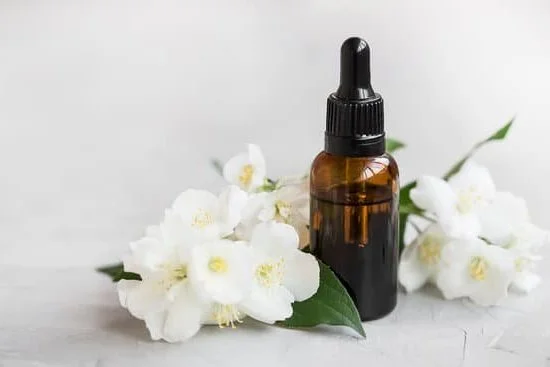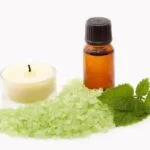Aromatherapy has long been recognized as a holistic practice that promotes physical, emotional, and mental well-being through the use of essential oils. However, what often goes unnoticed is the crucial role that carrier oils play in this therapeutic process. In this article, we will explore the world of aromatherapy and delve into the importance of carrier oils in enhancing its benefits.
At its core, aromatherapy is the practice of utilizing natural plant extracts, known as essential oils, to stimulate the senses and promote healing. These potent essences are derived from various parts of plants, such as flowers, leaves, bark, or roots, and possess unique aromatic compounds that offer a wide range of health benefits. However, it is important to note that essential oils are highly concentrated and can be too potent for direct application to the skin without dilution.
This is where carrier oils come into play. Carrier oils serve as a base or diluent for essential oils, allowing them to be safely applied topically or used in other applications. They help to dilute and disperse the essential oils while also acting as an effective medium for better absorption by the body. Additionally, carrier oils bring their own therapeutic properties to the mix, further enhancing the overall benefits of aromatherapy.
In this article, we will not only answer the question “what oil add to essential oil for aromatherapy,” but also provide comprehensive information on different types of carrier oils commonly used in aromatherapy. We will discuss their specific benefits and properties and guide you on how to choose the right carrier oil based on your individual preferences and therapeutic requirements.
By understanding and harnessing the power of carrier oils alongside essential oils in your aromatherapy practice, you can elevate your self-care rituals to new heights of relaxation and well-being.
Understanding Carrier Oils
In aromatherapy, carrier oils are essential for diluting and enhancing the therapeutic effects of essential oils. Carrier oils are vegetable-based oils that help to “carry” the essential oils onto the skin and aid in their absorption. There are various types of carrier oils commonly used in aromatherapy, each with its own unique benefits and properties.
- Coconut Oil: Coconut oil is one of the most commonly used carrier oils due to its versatility and long shelf life. It has a light texture and is easily absorbed by the skin, making it an ideal choice for massage blends. Coconut oil also possesses antimicrobial properties, making it beneficial for skincare routines.
- Jojoba Oil: Jojoba oil is another popular carrier oil known for its resemblance to the natural sebum produced by our skin. It is deeply moisturizing without clogging pores, making it suitable for oily or acne-prone skin. Jojoba oil also has a long shelf life and enhances the stability of essential oils in blends.
- Almond Oil: Almond oil is rich in vitamins E and A, which nourish and soften the skin. It has a medium consistency that allows for easy application and absorption. Almond oil is often recommended for dry or sensitive skin types because of its gentle nature.
When choosing a carrier oil, consider your individual preferences and therapeutic requirements. Some carrier oils have a stronger scent than others, which may affect the overall aroma of your blend. Additionally, take note of any allergies or sensitivities you may have when selecting a carrier oil.
To maximize the benefits of carrier oils in aromatherapy blends, proper dilution ratios should be followed to ensure safety and avoid any potential skin irritations. A general rule of thumb is to use a 2% dilution rate – that is 12 drops of essential oil per ounce (30 mL) of carrier oil. However, this ratio may vary depending on the specific essential oil and individual sensitivity.
The Role of Carrier Oils in Aromatherapy Blends
In the world of aromatherapy, carrier oils play a crucial role in creating well-balanced and effective blends. These oils are utilized to dilute essential oils before they are applied topically. This section will delve into the significance of carrier oils in aromatherapy blends, their ability to enhance the absorption and diffusion of essential oils, as well as how they contribute to balancing the potency and concentration of these oils.
One of the primary reasons for incorporating carrier oils into aromatherapy is to ensure the safe and proper application of essential oils. Essential oils are highly concentrated and potent substances that can potentially cause skin irritations or sensitivities if used in their undiluted form. By diluting them with carrier oils, such as coconut oil, jojoba oil, or almond oil, users can enjoy the therapeutic benefits of essential oils while minimizing any potential adverse effects.
Carrier oils also play a role in enhancing the absorption and diffusion of essential oils on both a physical and olfactory level. When combined with essential oils, carrier oils help to carry their aromatic molecules onto the skin’s surface, allowing for better absorption by the body. Additionally, carrier oils help to slow down the evaporation rate of essential oils when diffused, enabling individuals to enjoy prolonged aromatherapy experiences.
Furthermore, carrier oils assist in achieving balance within aromatherapy blends by reducing the concentration and intensity of essential oils. Different carrier oils have varying viscosities that can help mitigate any potential skin sensitivity caused by certain essential oils. It is important to consider both individual preferences and therapeutic requirements when selecting a suitable carrier oil for a specific blend.
To conclude, carrier oils serve an indispensable role in aromatherapy blends by ensuring safe application methods while enhancing absorption and diffusion. They contribute to balancing the potency and concentration of essential oils, ultimately leading to more enjoyable holistic wellness practices. By understanding how different carrier oils interact with various essential oil properties, individuals can create customized blends that suit their needs and preferences.
Best Carrier Oils for Different Essential Oils
Understanding the role of carrier oils in aromatherapy blends is crucial for achieving optimal results. Choosing the right carrier oil to pair with different essential oils can enhance their therapeutic benefits and ensure a safe and effective aromatherapy experience. Here are some recommendations for the best carrier oils to use with different essential oils:
Lavender Essential Oil
Lavender essential oil is versatile and widely used for its calming, soothing, and balancing properties. It blends well with various carrier oils, such as almond oil, jojoba oil, and grapeseed oil. Almond oil is lightweight and easily absorbed by the skin, making it an excellent choice for massage or skincare blends with lavender essential oil.
Jojoba oil closely resembles our skin’s natural sebum and is known for its moisturizing effects. It can be used as a carrier oil in facial serums or hair care products infused with lavender essential oil.
Peppermint Essential Oil
Peppermint essential oil is invigorating and refreshing, known for its cooling sensation and ability to promote mental clarity. When selecting a carrier oil for peppermint essential oil, coconut oil is an excellent option due to its cooling properties that complement the menthol-like scent of peppermint. Coconut oil solidifies at room temperature, but it melts upon contact with the skin, making it easy to spread during massages or application onto larger areas of the body.
Tea Tree Essential Oil
Tea tree essential oil has powerful antibacterial and antifungal properties, making it beneficial for addressing skin conditions like acne or fungal infections. Grapeseed oil is often recommended as a carrier oil for tea tree essential oil due to its light texture, high antioxidant content, and non-comedogenic nature (meaning it won’t clog pores). This combination creates an effective blend that can be used topically on blemishes or in skincare products targeting problematic skin.
When choosing a carrier oil for essential oils, it is important to consider the specific properties and intended effects of the essential oil. Additionally, personal preferences and any known allergies should be taken into account. Conducting a patch test before using any new carrier oil or essential oil blend is recommended to ensure there are no adverse reactions. Remember, experimentation is key in finding the best combination of carrier oils and essential oils that work harmoniously for your aromatherapy needs.
Guidelines for Blending Essential Oils with Carrier Oils
Blending essential oils with carrier oils is a fundamental skill in the practice of aromatherapy. When used properly, this process allows for the safe and effective application of essential oils to the skin, maximizing their therapeutic benefits. To ensure a successful blend and avoid any potential skin irritations or adverse reactions, it is important to follow some guidelines and best practices.
Firstly, it is crucial to properly dilute essential oils before applying them topically. Undiluted essential oils can be too strong and may cause skin sensitivities or irritation. The general rule is to use a dilution ratio of 1-2% for most adults, which means adding approximately 6-12 drops of essential oil per ounce (30 mL) of carrier oil. However, for children, the elderly, or individuals with sensitive skin, a lower dilution ratio should be used.
When choosing a carrier oil for blending with essential oils, consider both the properties of the carrier oil itself and the intended effects of the essential oil being used. Some carrier oils have specific therapeutic properties that can complement or enhance the benefits of certain essential oils.
For example, coconut oil is highly moisturizing and nourishing for the skin, making it an excellent choice for skincare blends. Jojoba oil closely resembles our skin’s natural sebum and is often used in facial serums or hair treatments.
To blend essential oils with carrier oils effectively, it is important to measure accurately and mix thoroughly. Use glass dropper bottles or pipettes to measure out the desired quantities of each oil to achieve proper dilution ratios.
Add the required number of drops of essential oil into your chosen carrier oil and mix well by gently swirling or shaking together until fully combined. It is generally recommended to let your blend sit for at least 24 hours before using it to allow any chemical changes or interactions between the oils to occur.
It is worth noting that certain essential oils have specific safety considerations and usage guidelines. Some oils are not recommended for use during pregnancy or on individuals with certain medical conditions. Before blending essential oils with carrier oils, be sure to research specific precautions and contraindications for each oil to ensure safe and appropriate usage.
By following these guidelines, individuals can confidently blend essential oils with carrier oils for a customized aromatherapy experience that caters to their specific needs. Experimenting with different blends and carrier oils can help create unique combinations that harness the power of aromatherapy while providing a pleasant and enjoyable sensory experience.
Other Uses of Carrier Oils in Aromatherapy
Carrier oils have a wide range of uses in aromatherapy beyond simply blending with essential oils. These versatile oils can be utilized in various holistic wellness practices, including massage, skincare, hair care, and diffuser blends.
One of the most popular uses of carrier oils is for massage. The nourishing and hydrating properties of carrier oils make them excellent choices for providing a smooth glide during massages. The carrier oil can be applied directly to the skin or mixed with essential oils to create a personalized massage blend. Examples of carrier oils commonly used for massage include coconut oil, jojoba oil, and sweet almond oil.
In addition to massage, carrier oils are also beneficial for skincare routines. Many carrier oils have moisturizing and rejuvenating effects on the skin, making them ideal for facial and body care. For instance, rosehip seed oil is rich in antioxidants and vitamin C, which can help improve skin tone and reduce signs of aging. On the other hand, argan oil is known for its hydrating properties that can nourish dry skin.
| Carrier Oil | Main Benefits |
|---|---|
| Coconut Oil | Natural moisturizer; antimicrobial properties |
| Jojoba Oil | Regulates sebum production; good for oily skin |
| Sweet Almond Oil | Softens and soothes the skin; suitable for sensitive skin |
| Rosehip Seed Oil | Anti-aging; improves skin texture and appearance |
| Argan Oil | Hydrating; reduces dryness and flakiness |
Furthermore, carrier oils can be used in hair care routines to nourish and condition the hair. Certain carrier oils, such as jojoba oil and argan oil, have properties that can strengthen hair follicles and promote healthy hair growth. These oils can be applied directly to the scalp or mixed with other ingredients, like essential oils, to create effective hair treatments.
Lastly, carrier oils are commonly used in diffuser blends. They serve as a base for diluting essential oils before diffusing them into the air. The carrier oil helps disperse the scent of the essential oil more evenly throughout the space, allowing for longer-lasting aroma and enhanced therapeutic benefits. Examples of carrier oils suitable for diffuser blends include fractionated coconut oil and grapeseed oil.
Common FAQs and Concerns about Carrier Oils in Aromatherapy
Addressing Allergic Reactions and Sensitivity Concerns
One of the most common concerns when it comes to using carrier oils in aromatherapy is the potential for allergic reactions or skin sensitivities. It is important to note that while carrier oils are generally safe and well-tolerated, each individual may react differently to different oils. This is why it is essential to perform a patch test before using any new carrier oil or aromatherapy blend.
To perform a patch test, dilute a small amount of the carrier oil with the recommended ratio of essential oil. Apply a small amount of this blend onto the inside of your forearm or behind your ear, then cover it with a bandage or cloth to prevent accidental contact or exposure.
Leave it on for 24 hours and observe any signs of redness, itching, swelling, or discomfort. If no adverse reactions occur during this time, you can generally proceed with using the blend as intended.
In cases where an allergic reaction or sensitivity does occur, discontinue use immediately and consult with a healthcare professional. They can help identify the specific component in the carrier oil that may have caused the reaction and provide alternative options that are better suited for your individual needs.
Carrier Oils and Contraindications
While carrier oils are generally safe for most individuals, certain medical conditions or medications may require extra caution when choosing and using them in aromatherapy. It’s important to consider any contraindications that may exist between specific carrier oils and an individual’s health profile.
For example, individuals who are prone to acne or have oily skin may want to avoid heavier carrier oils such as coconut oil as they can potentially clog pores and exacerbate existing skin issues. In such cases, lighter carrier oils like jojoba oil or grapeseed oil are often recommended for their non-comedogenic properties.
Similarly, pregnant women should exercise caution and consult with their healthcare provider before using certain carrier oils. While many essential oils are generally safe during pregnancy, carrier oils like clary sage or rosemary may not be recommended due to their potential hormonal effects.
It is always best to seek guidance from a qualified aromatherapist or healthcare professional who can provide personalized advice based on individual circumstances and health considerations.
Choosing the Right Carrier Oil for Your Needs
The wide range of available carrier oils can sometimes make it overwhelming to choose the right one for your aromatherapy needs. However, by considering a few key factors, you can easily find the perfect carrier oil that suits your preferences and therapeutic requirements.
Firstly, consider the properties of the essential oil you wish to blend with. Each essential oil has unique characteristics and intended effects. For example, if you are looking for an uplifting and energizing blend, citrus essential oils such as lemon or sweet orange might be suitable. In this case, lighter and fast-absorbing carrier oils like grapeseed oil or apricot kernel oil would complement these citrus oils well.
Secondly, take into account your skin type and preferences. Some carrier oils are more moisturizing while others have a drier and less greasy feel. If you have dry or mature skin, carrier oils like avocado oil or rosehip seed oil may offer more nourishment and hydration. On the other hand, those with oily or acne-prone skin might benefit from lighter options such as jojoba oil or hazelnut oil.
Lastly, don’t forget to consider any personal sensitivities or allergies that may exist. If you have known allergies to nuts, for example, it is important to avoid carrier oils derived from nut sources such as almond oil or walnut oil.
By taking these factors into account when choosing a carrier oil for your aromatherapy blends, you can maximize the benefits and enjoyment of your overall aromatherapy experience.
Conclusion
In conclusion, carrier oils play a crucial role in the practice of aromatherapy. They not only dilute essential oils for safe topical application but also enhance their absorption and diffusion. By balancing the potency and concentration of essential oils, carrier oils allow for a more effective and enjoyable aromatherapy experience.
Throughout this article, we have explored the different types of carrier oils commonly used in aromatherapy, such as coconut oil, jojoba oil, and almond oil. Each carrier oil has its own unique benefits and properties that can be tailored to individual preferences and therapeutic requirements. It is important to consider these factors when choosing a carrier oil to create an optimal synergy with different essential oils.
Moreover, blending essential oils with carrier oils requires careful consideration of dilution ratios and effective mixing techniques. By following proper guidelines and measurements, one can ensure safety and avoid skin irritations. Additionally, it is worth noting that carrier oils have versatile applications beyond blending with essential oils. They can be used for massages, skincare routines, haircare treatments, and diffuser blends among others.
In harnessing the power of carrier oils in aromatherapy, individuals are encouraged to explore and experiment with different options to discover what works best for them. By understanding the benefits each carrier oil offers and selecting appropriate choices based on personal needs, one can fully maximize the potential of aromatherapy. So whether you are a seasoned practitioner or new to aromatherapy, incorporating carrier oils into your practice will undoubtedly elevate your experiences and bring about holistic wellness benefits.
Frequently Asked Questions
What oil to add to essential oils?
When blending or diluting essential oils, it is common to add a carrier oil. Carrier oils are typically vegetable-based and help to dilute the concentrated essential oils while still allowing them to be effectively applied and absorbed by the skin.
Some commonly used carrier oils include almond oil, jojoba oil, coconut oil, and grapeseed oil. Each carrier oil has its own unique properties and benefits, so it’s important to choose one that suits your needs and preferences.
How do you mix essential oils for aromatherapy?
Mixing essential oils for aromatherapy requires careful consideration of their individual properties, scents, and intended therapeutic effects. To create a blend, it is recommended to start with a base note essential oil as the foundation for the aroma. This can be combined with middle or top notes that complement or enhance the scent profile.
It’s important to use only a few drops of each essential oil to avoid overpowering fragrances or potential negative interactions between different oils. Additionally, always refer to reputable resources or consult with a certified aromatherapist for guidance on specific blends.
What do you mix aromatherapy oils with?
Aromatherapy oils can be mixed with various substances depending on their intended usage or application method. One common option is using carrier oils mentioned earlier, which work well for topical applications such as massage or skincare routines. Other possibilities include using unscented lotions, creams, or even natural emulsifiers like witch hazel or aloe vera gel for creating customized body products like sprays or creams with aromatherapeutic benefits.
Additionally, some people choose to diffuse essential oils in water-activated diffusers or add them directly into bathwater for inhalation purposes during bathing relaxation sessions. The choice of mixing medium largely depends on personal preference and the desired method of application for optimal enjoyment and therapeutic benefits from aromatherapy oils.

Are you looking for a natural way to improve your health and wellbeing?
If so, aromatherapy may be the answer for you.






